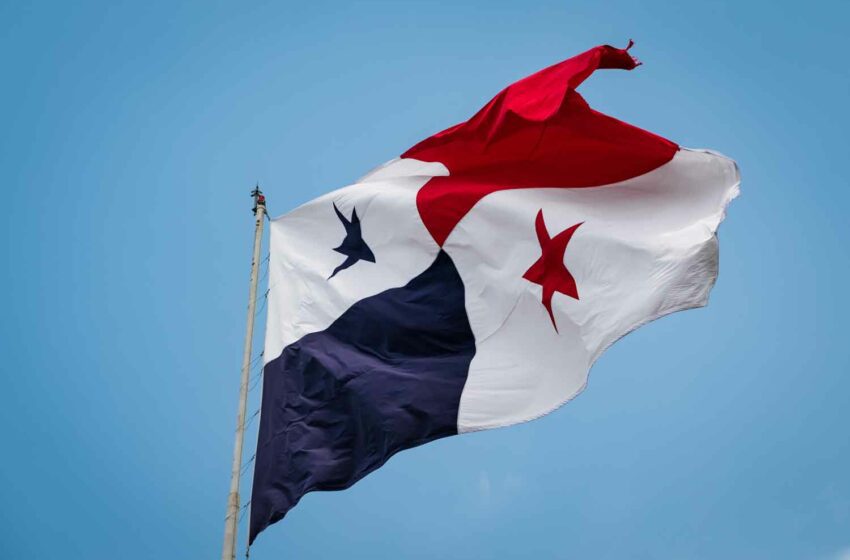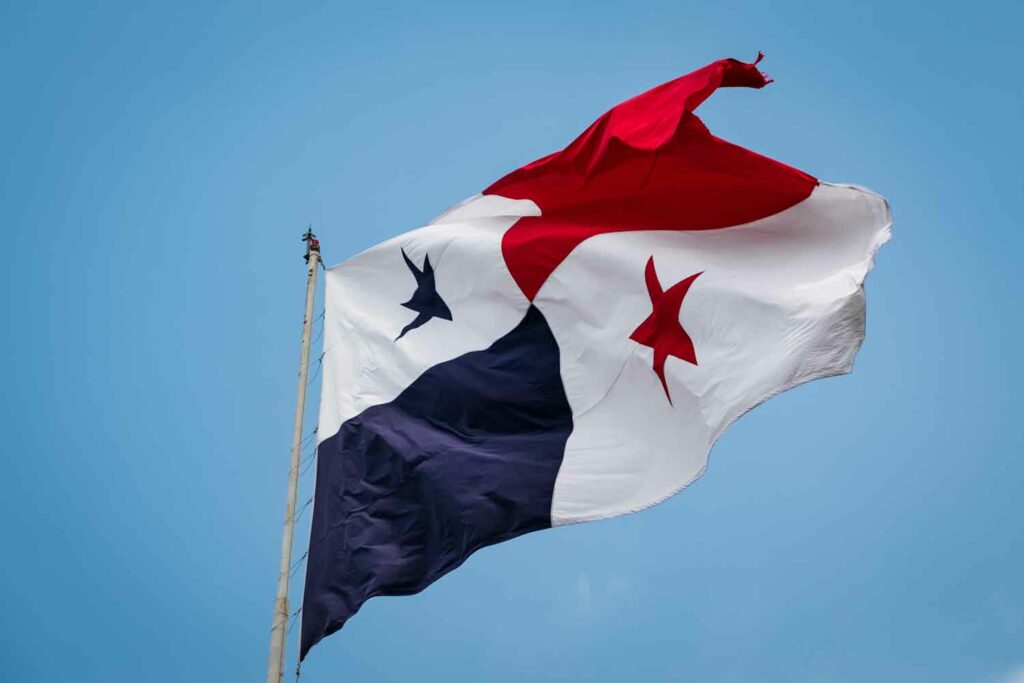Party Time
- Also in TR Print Edition
- September 6, 2023
- 0
- 18 minutes read


The industry will not be present as the FCTC parties debate future tobacco and nicotine policies in Panama this autumn.
By Taco Tuinstra
From Nov. 20 to Nov. 25, delegates representing the countries that have signed to the Framework Convention on Tobacco Control (FCTC) will gather in Panama City to discuss tobacco and nicotine policies at the 10th Conference of the Parties (COP10). It’s an event that warrants close scrutiny because the decisions taken at the COP tend to have profound implications on the nicotine business and its customers, impacting the future of manufacturers, suppliers and tobacco growers along with stakeholders such as smokers and vapers.
“COP is a highly influential global policy center for tobacco,” explains Flora Okereke, head of global insights and foresights at BAT. “It covers everything in the tobacco value chain from ‘seed to smoke.’” Even though the forum’s guidelines are just recommendations, many of the guidelines make it into national legislation.
Major policies, such as plain packaging and flavor restrictions, were floated at the COP before they were adopted by leading markets. The COP also inspired the bans on industry science that have proliferated in recent years—a development that Okereke considers to be even more detrimental to the cause of tobacco harm reduction (THR) than the event’s well-established restrictions on industry engagement.
In addition to impact at the national level, the COP also holds considerable institutional sway globally. “The FCTC is lodged not under the WHO but under the U.N., which means it has implications for trade, agriculture and finance as well,” notes Derek Yach, a global health expert who was deeply involved in the crafting of the treaty two decades ago. Through its interactions with bodies such as the World Health Organization, the World Trade Organization (WTO) and the World Bank, the COP is able to spread its tobacco control philosophies, which tend to favor prohibition over more progressive approaches.
All this implies that the COP bears an outsized influence on the future of the nicotine business.
So, what can the industry expect from COP10? Experts who have been following the preparations expect debates about the “tobacco endgame,” which includes nicotine reduction, retailer quotas and generational tobacco purchasing bans. They also anticipate talks on contents and emissions testing and measurements, filters and ventilation, and pricing and tax increases.
At press time, documents had been released for discussions about extending advertising/sponsorship restrictions to corporate campaigns and newer media; supporting anti-tobacco litigation; and discouraging industry diversification into pharmaceuticals and other areas. Also on the agenda: a proposal to redefine aerosol from tobacco-heating products as smoke—a move that critics have described as an attempt to rewrite basic scientific principles.
In addition, the COP delegates will consider recognizing tobacco control as fundamental to the right to health, clearing the way to attack the industry as a violator of human rights and subject it to additional liability. However, they will not discuss the negative impact of such an approach on smokers and tobacco farmers—two highly stigmatized groups. Participants in the Panama event will likely also debate emerging evidence on new products. Worryingly, they may push for e-cigarettes and tobacco-heating products to be regulated like combustible cigarettes, a development that critics say is not based on science and would discourage the THR that has been underway in many countries.
Rejecting Harm Reduction
To tobacco harm reduction proponents, the COP’s growing aversion to THR and the potential of new nicotine products is among its most disturbing characteristics. Even though FCTC Article 1(d) identifies harm reduction as a fundamental tobacco control strategy, THR has been given short shrift during the biennial conferences, with delegates pushing increasingly prohibitionist policies with each subsequent gathering.
That attitude, says Okereke, is particularly unwarranted considering the emergence of reduced-risk alternatives to smoking. While acknowledging that the first port of call should be smoking cessation, she believes that those who do not wish to quit using nicotine deserve access to better alternatives. “Despite years of tobacco control, more than 1 billion people continue to smoke,” says Okereke. “What do we do with those people? Can we at least offer them alternatives to reduce risks? Years ago, there would have been no options. But thanks to technology, smokers now have real alternatives.”
Yach is bothered by the inability of the COP delegates to engage in the science. “That’s a failure of imagination,” he says, especially when considering how their colleagues in medicine and other areas have embraced the concept of harm reduction. According to Yach, some of the ambassadors who negotiated the FCTC were also involved in the WTO Doha round about AIDS drug pricing at the start of the new millennium. But whereas the WTO approach was all about patents and innovation, the FCTC never mentions those words. “The people negotiating that treaty simply assumed there was no possibility for improvement in tobacco,” he says.

Despite years of tobacco control, more than 1 billion people continue to smoke. What do we do with those people? Can we at least offer them alternatives to reduce risks? Years ago, there would have been no options. But thanks to technology, smokers now have real alternatives.
Yach suspects that the resistance to progressive policies is fueled by the fear that THR is an industry trick to sustain sales. But while there may have been legitimate concerns in the early years of THR, he says those should have evaporated as more science became available. “Once we started seeing the big shift out of combustibles and better science showing that the exposure levels [of the new products] were almost unmeasurable, one would expect change.”
The other factor that has pushed hostility to THR, according to Yach, is the U.S. response to e-cigarettes. “The U.S. approach puts kids—even the theoretical concern about underage vaping—above the real gain to adult smokers who could benefit from new products,” he says. “This ‘kiddification’ policy became the norm internationally once the billionaire philanthropist Michael Bloomberg started pouring hundreds of millions of dollars into extending the campaign across India, Pakistan and other countries. The impact was significant. In 2019, India, one of the world’s largest tobacco markets, banned e-cigarettes, depriving some 100 million combustible cigarette smokers of safer alternatives.
Bloomberg’s resistance to THR is puzzling given that his charitable foundation funds some of the best harm reduction programs outside of tobacco control, tackling tough issues such as HIV and drug abuse, for example. Reliable sources indicate that the foundation’s unwillingness to extend the harm reduction philosophy to tobacco control has caused divisions even within the organization, providing a sliver of hope that Bloomberg may over time become more amenable to THR.
Resisting Engagement
For the time being, however, the COP’s opposition to THR is likely to persist, especially in light of its reluctance to hear dissenting views. Just like the rejection of THR, the ban on industry engagement is not spelled out in the treaty. FCTC Article 5.3 instructs parties to protect public health polices from the tobacco industry’s commercial and other vested interests, but it does not prohibit discussions or engagement outright, which the framers of the treaty realized would be unworkable. “We knew at the time that such a ban was impossible in the case of the Chinese government [which operates the world’s largest tobacco conglomerate] and other countries with state monopolies,” says Yach. Yet the Secretariat took an extreme interpretation of Article 5.3., and it is the nonbinding guidelines—but not the treaty itself—that contain the words “prohibit,” “ban” and “do not involve,” according to him.
As a result, the FCTC is the only treaty in the UN system where key stakeholders often lack the ability to share their views and insights. Whereas energy companies, including those working in fossil fuel industries, have had ample opportunity to engage during the U.N. Climate Change Conferences and share their insights into how to bring about the desired transition to green energy, the tobacco industry and the rest of the general public will be excluded from having input in Panama, just like at virtually every COP since the creation of the FCTC.
Such exclusion is detrimental because it means the best available science on tobacco issues will not be taken on board during the COP discussions. Conducting research is expensive—often prohibitively so for noncommercial actors. The industry spends a lot of money on science, according to Okereke. “Nobody else will do that level of research except if they are paid,” she says. But if the industry pays a third party to conduct science, that work will still be treated with suspicion. “Despite industry conducting most science related to new products, COP has historically dismissed our research. Industry is also unable to communicate its findings to consumers because it is prevented from doing so.”
This situation, says Okereke, has contributed to unhelpful misperceptions, even among specialists. For example, a recent survey commissioned by the Foundation for a Smoke-Free World found that nearly 80 percent of doctors worldwide mistakenly believe that nicotine causes lung cancer, thwarting efforts to help smokers quit with the help of less harmful products.
Remember the Mandate
Okereke and Yach believe COP delegates should remember their original mandate—to reduce the death and disease caused by tobacco use. Over the years, the FCTC has expanded its scope from a narrow focus on tobacco to targeting nicotine and the industry as such. This has led to bizarre positions such as opposition to diversification. “On the one hand, they want industry to move out of tobacco—yet when the industry takes steps to do that, they try to block it,” says Okereke. The ultimate objective of the FCTC, she notes, is not to increase the number of laws or to turn the screws on industry but to improve public health.
In this context, it is telling that some of the countries with the most progressive approaches to new nicotine products have made the greatest progress. Smoking rates in Japan, the United States and Britain, for example, have fallen to record low levels without the prohibitionist measures recommended by the COP. In Japan, the slump in smoking is attributed largely to the success of heat-not-burn products while e-cigarettes are likely to have contributed to the declining popularity of traditional cigarettes in the U.S. Britain’s success in lowering smoking—by the end of 2022, prevalence had fallen to just 13.3 percent—is widely credited to that country’s progressive regulatory approach to vaping.
By contrast, many early adopters of the FCTC that have been attending the COP for the past 17 years continue to struggle with high smoking rates. With a smoking prevalence of more than 80 percent among adult men, Jordan, which ratified the FCTC in June 2004, has the world’s highest share of male cigarette consumers, for instance.

The moment you use the phrase 'appropriate for the protection of public health,' you run against the rationale given for banning involvement of the industry, which is that there is an irreconcilable difference between the tobacco industry and public health. If something is APPH, then there is no irreconcilable conflict—there is a way to reconcile it through reduced-risk products.”
Given the prevailing restrictions on industry engagement, THR activists hope that representatives of countries with progressive policies toward new products will share their success stories with other COP delegates, many of whom come from developing countries with particularly high smoking rates and more limited regulatory capacity. The U.K. is particularly well placed in this regard because its government has actively supported moving smokers to less harmful products. Sweden’s success in reducing smoking is also worthy of discussion at COP10; thanks to snus, smoking prevalence in Sweden is poised to dip below the 5 percent that is widely considered to be the hallmark of a smoke-free society.
The other candidate is the U.S. Having signed the FCTC but not yet ratified it, that country is entitled to intervene during the COP discussions. “The U.S. Food and Drug Administration simply needs to highlight the products it has authorized based on the phrase ‘appropriate for the protection of the public health,’ or APPH,” says Yach. “If something is APPH in the U.S., it must be APPH everywhere. The moment you use that phrase, you run against the rationale given for banning involvement of the industry, which is that there is an irreconcilable difference between the tobacco industry and public health. If something is APPH, then there is no irreconcilable conflict—there is a way to reconcile it through reduced-risk products [RRPs].”
Yet, while Yach believes that the U.K., the U.S. and other countries with more progressive tobacco control policies have an obligation to speak about their successes, he is not holding his breath. The demonization of the industry runs so deep, he notes, that they may hesitate to boast about the success of their accommodative regulatory frameworks.
So, deprived of a voice, the nicotine business will be left off of the guest list again as COP delegates descend on Panama this autumn. The worst outcome of this conference, from the industry’s perspective, would be a series of prohibitionist policy recommendations, with delegates urging bans on flavors and disposable e-cigarettes, for example, along with tax structures that would make it unviable to move ahead with RRPs. Without flavors and risk-proportionate taxation, smokers will have fewer incentives to switch to smoking alternatives, and if governments ban RRPs altogether, the only product available will be the riskiest of all—the combustible cigarette.
A better outcome would be for COP delegates to acknowledge that THR has a role to play in mitigating the health impact of tobacco use and to provide for an unbiased review of evidence related to new products. For example, an independent commission could be convened to review the scientific evidence on RRPs that has come out since the last COP, including the FDA product authorizations and the decisions of the U.K. government and others based on science.
Though clearly concerned about what might transpire in Panama, Okereke and Yach remain optimistic about the outlook for THR in the longer term. “I believe the story we are telling is compelling,” says Okereke. “The data and the narrative support our positions. In the 10 years since BAT launched its first e-cigarette, we now count over 24 million adult consumers of less risky alternatives to smoking.” While acknowledging concerns about youth uptake and the environment, she is convinced that these issues can be addressed without resorting to prohibition and depriving smokers of such alternatives. Yach, too, sees reason to be hopeful, albeit not immediately. The data, he says, speaks for itself: “In the end—after everything else has been tried—science does win.”
The millions of smokers looking for less harmful alternatives will be hoping that victory comes sooner than later.
Welcome to the Party: Meet Your Hosts
The Framework Convention on Tobacco Control (FCTC) is an international agreement established to combat the global health problems caused by tobacco use. A framework convention establishes broad commitments and leaves the setting of specific actions and targets either to subsequent more detailed agreements (usually called protocols) or to national legislation.
The first treaty to be negotiated under the auspices of the World Health Organization, the FCTC defines tobacco control as “a range of supply demand and harm reduction strategies that aim to improve the health of population by eliminating or reducing their consumption of tobacco products and exposure to tobacco smoke.”
The FCTC was adopted by the World Health Assembly (the highest decision-making body of the WHO) on May 21, 2003, and entered into force on Feb. 27, 2005. To date, 182 countries have signed and ratified the FCTC. Six countries have signed the convention but not ratified it; nine have done neither. This makes the FCTC one of the most widely adopted U.N. treaties.
The Conference of the Parties is the governing body of the convention. Meeting every two years, it is the venue for discussions about the implementation of the FCTC. All countries, whether they have ratified the treaty or not, can actively participate in discussions. Countries that have ratified the convention are known as “parties.” Countries that have not ratified have observer status and may intervene during the discussions. Delegations typically comprise health officials, although other domestic departmental interests along with nongovernmental organizations and subject specialists might also attend. Past COPs have taken place in Geneva, Durban and Seoul, among other cities. The 2021 gathering took place virtually due to the Covid-19 pandemic.
The FCTC Secretariat supports and implements the business of the COP between meetings. While in theory, this body simply administers the COP, it plays a significant role in determining the agenda of each meeting.
The above descriptions are based on a COP10 briefing paper published by The Global State of Tobacco Harm Reduction, which is available in multiple languages. The full text of the FCTC is here.

